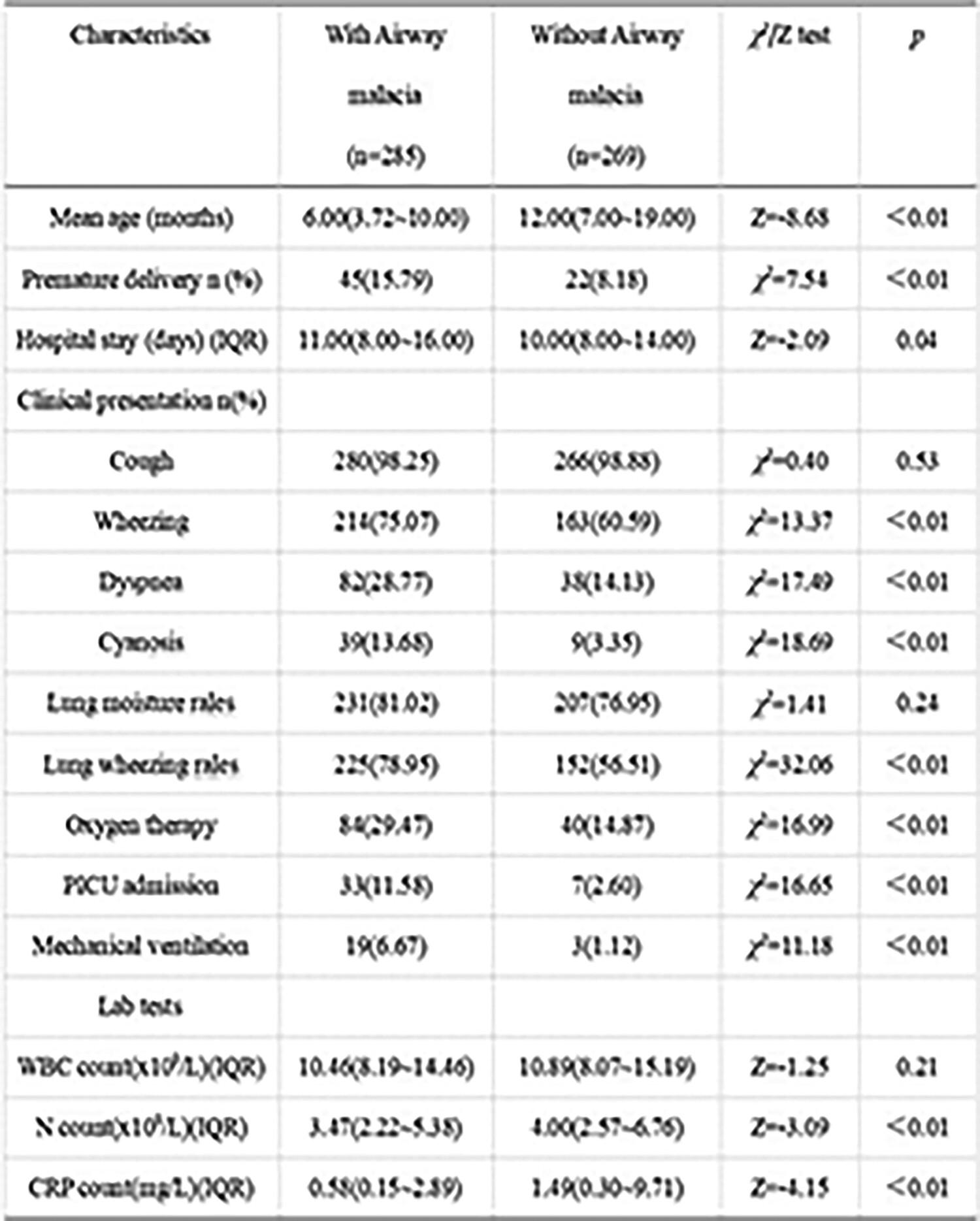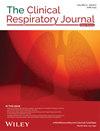The aim of this study is to investigate the clinical characteristics and pathogens involved in persistent or recurrent pneumonia combined with airway malacia in children.
We retrospectively reviewed the information of children hospitalised with persistent or recurrent pneumonia, including clinical presentations, laboratory examination results and pathogens.
A total of 554 patients were admitted, 285 (51.44%) of whom were found to have airway malacia. There were 78 (27.37%), 166 (58.25%) and 41 (14.39%) patients with mild, moderate and severe malacia, respectively. Patients with airway malacia were younger than those without malacia (6.0 vs. 12.0 months, p < 0.01) and were more likely to present with wheezing (75.07%), fever (34.39%), dyspnoea (28.77%), cyanosis (13.68%) and wheezing in the lungs (78.95%). The incidence of preterm delivery, oxygen therapy, paediatric intensive care unit (PICU) admission and mechanical ventilation was higher, and the hospital stay (11.0 vs. 10.0 days, p = 0.04) was longer in these patients than in those without malacia. Patients with severe airway malacia were more likely to undergo oxygen therapy, PICU admission, mechanical ventilation and have multiple malacia than were those with mild or moderate malacia. Mycoplasma pneumoniae (30.18%) was the most common pathogen.
Severe airway malacia likely aggravates conditions combined with pneumonia. The proportion of multisite malacia was greater in severe airway malacia patients.



